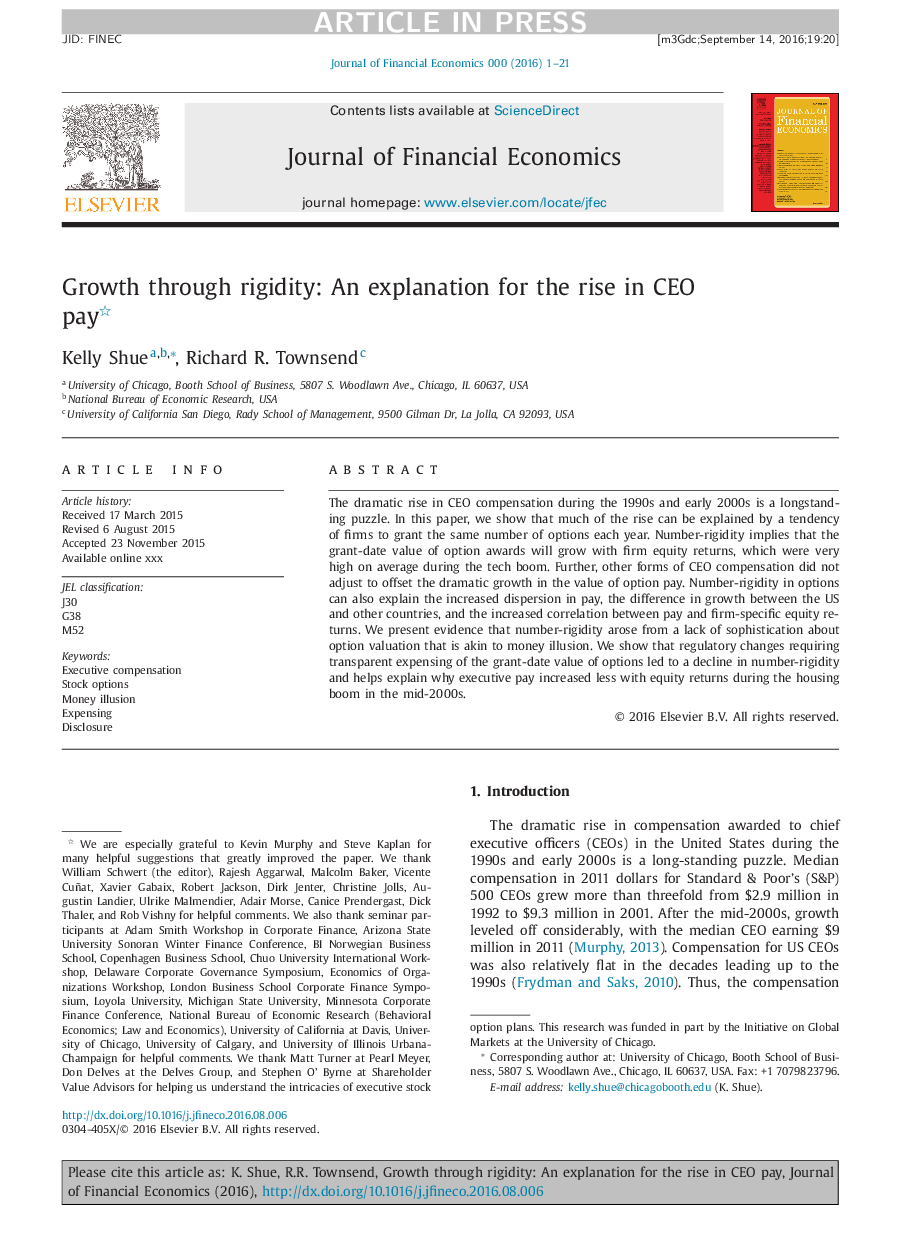| Article ID | Journal | Published Year | Pages | File Type |
|---|---|---|---|---|
| 5100598 | Journal of Financial Economics | 2017 | 21 Pages |
Abstract
The dramatic rise in CEO compensation during the 1990s and early 2000s is a longstanding puzzle. In this paper, we show that much of the rise can be explained by a tendency of firms to grant the same number of options each year. Number-rigidity implies that the grant-date value of option awards will grow with firm equity returns, which were very high on average during the tech boom. Further, other forms of CEO compensation did not adjust to offset the dramatic growth in the value of option pay. Number-rigidity in options can also explain the increased dispersion in pay, the difference in growth between the US and other countries, and the increased correlation between pay and firm-specific equity returns. We present evidence that number-rigidity arose from a lack of sophistication about option valuation that is akin to money illusion. We show that regulatory changes requiring transparent expensing of the grant-date value of options led to a decline in number-rigidity and helps explain why executive pay increased less with equity returns during the housing boom in the mid-2000s.
Related Topics
Social Sciences and Humanities
Business, Management and Accounting
Accounting
Authors
Kelly Shue, Richard R. Townsend,
